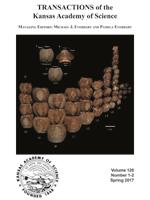Worker bees of 15–25 days old perform a stereotyped behavior around the hive entrance termed “washboarding”. While washboarding behavior is well documented in domesticated bee hives, there is still no consensus as to what its purpose is, and the behavior has not previously been reported in natural bee hives in forest settings. Many observers suggest that the bees are cleaning the surface, though no one has proposed a possible reason for the head-down, vertical body orientation typical of washboarding. I present observations of washboarding at two feral honey bee hives in cavities of dead trees in a mixed hardwood forest in Douglas County, Kansas, in summer 2016. In addition to the probable surface cleaning of the washboarding activity, I suggest that a primary function of washboarding may be to assist returning foragers in locating the nest entrance through the application of pheromones emitted from the tarsal and Nasonov glands of workers, and that the vertical head-down posture of bees may help to disperse the volatile Nasonov pheromone.
How to translate text using browser tools
1 April 2017
Washboarding in Feral Honey Bees, Apis mellifera: Observations at Natural Hives
James F. Taulman
ACCESS THE FULL ARTICLE
Apis mellifera
honey bees
Nasonov pheromones
tarsal pheromone
washboarding





